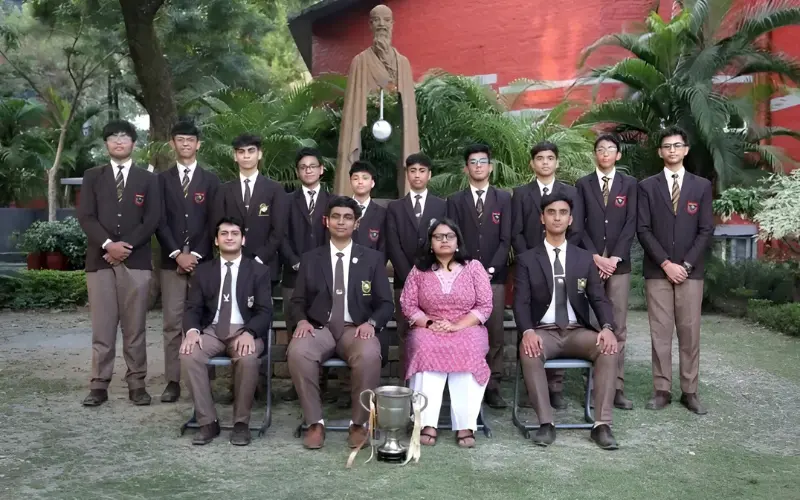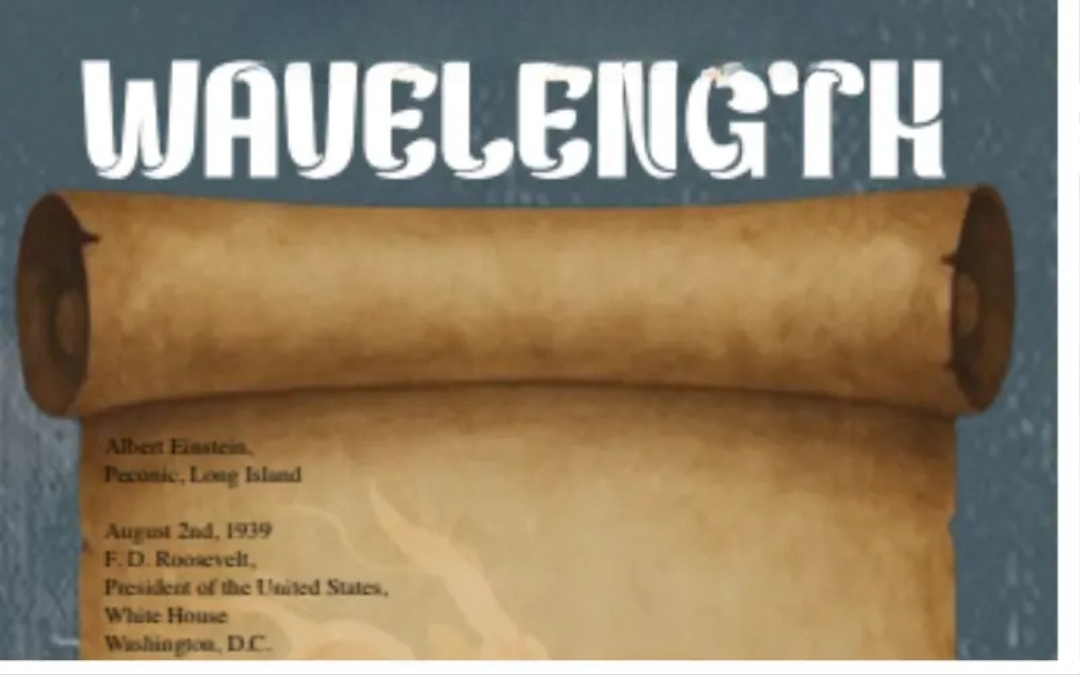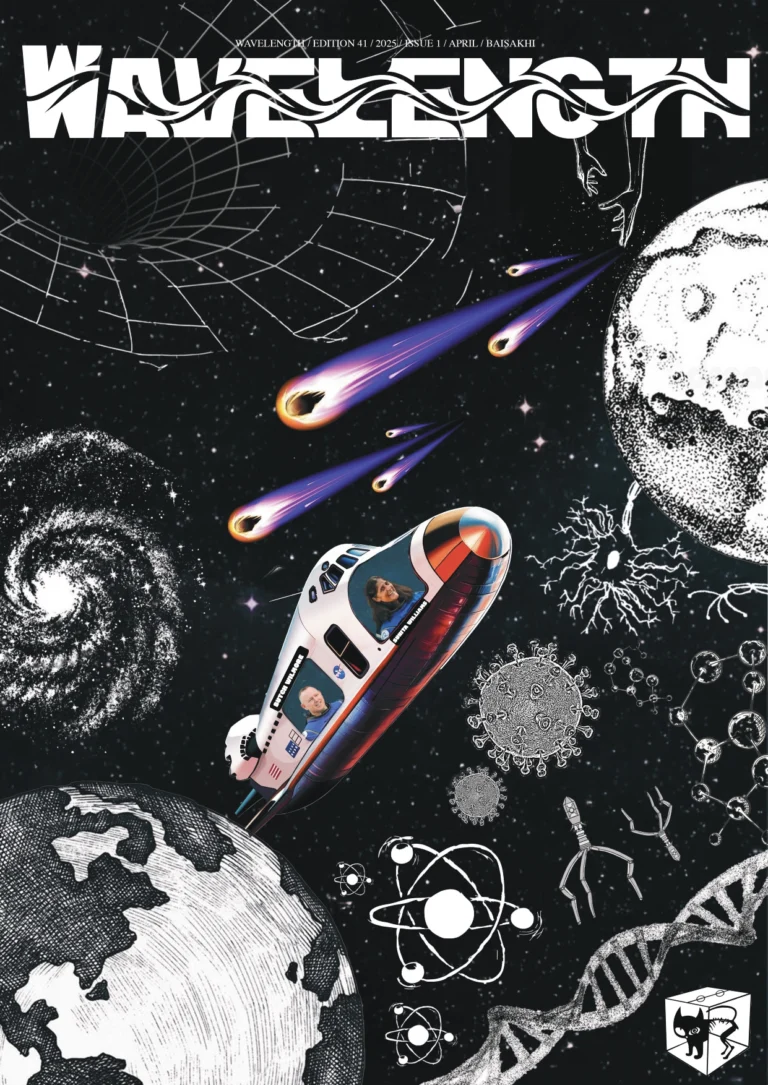

I took over as Editor-in-Chief of Wavelength without knowing that I was enrolling not just to edit a magazine, but to etch out a vision. Wavelength has evolved from a biannual science magazine to an interdisciplinary odyssey of ideas — a place that is true to how imagination and intellect can occupy the same space. From two editions a year it has expanded to four, each one with its own creative cycle, scientific interest, and feeling of collaborative authorship.
My initial intention was a shift in structure. Two times a year seemed like snapshots; four was a chronicle. This increase was not about quantity — it was about rhythm. Each issue now captured the academic, scientific, and cultural beat of the term it covered. The new frequency also embodied something deeper: a constant dialogue between students, science, and society.
The most daring leap of all, however, was with the WELMUN edition — when I debuted the A3 Pamphlet-style magazine. Away went the traditional bound book; we experimented with a new size that was as much a visual slam as it was a practical step forward. It wasn’t just a new appearance; it was a statement that science communication needed to be dynamic, accessible, and modern. The pamphlet embodied the Model United Nations spirit — spontaneous, thematic, and world-aware — yet still embodying Wavelength’s identity.

Perhaps the most revolutionary change was taking VFX to the domain of print media — a dream that began as an evening test and became an institutional standard. At first, we employed a pre-designed template to make 3D characters, just to see if a virtual version could be tangible, immersive, and alive. It worked, but it wasn’t ours.
So I went one step further. We hard-coded the entire platform from scratch and hosted it independently on Netlify. The idea was to create an interface where all the black-and-white printed pages would transport the reader to a digital realm — one where the very same page would be in full color, in animated form. The “Wavelength VFX Edition” became a confrontation between physical ink and virtual imagination — a science magazine that actually moved.
That generation reimagined our relationship with technology. It was no longer about content anymore — it was about experience.
Students began to think of articles in terms of multimedia statements rather than rigid paragraphs, and the creative board suddenly found itself grappling with HTML, CSS, and VFX rendering with the same sense of awe that it reserved for astrophysics and ethics.
Themes are the blood of any magazine, and to us, each was a way of questioning textbooks just cannot.
We began with “Microscopic to Celestial Beyond” — a theme that encouraged writers to cross scales of existence, from quantum to cosmic. It reminded us that curiosity has no bounds, whether it explores the cell or the star.
Later, “Yesterday’s Scientific Brilliance, Tomorrow’s Battlefields” tested that curiosity for conscience. It explored the moral issues of progress — the way the very same science propelling medicine is also able to generate warfare. That topic was the first bilingual scientific journal in Welham’s history — a reflection of inclusiveness and intellectual diversity.
But beyond theme and design, the final test was management of people. The Wavelength editorial board grew to 16 editors and designers, each with his or her own style and temperament. I learned along the way that management in a creative setting is not about authority — it’s about harmony. Balancing the team involved achieving balance between autonomy and direction, excitement and discipline, and occasionally, caffeine and chaos.
Our cooperation extended far beyond the student board — I had the opportunity to work with over a dozen faculty members, each bringing their expertise from as wide a spectrum as Physics and English to History and Art. Together, we ensured that Wavelength was not only scientifically accurate, but mentally dynamic. Managing a ₹5,00,000 budget over print production, online hosting, VFX setup, and outreach programmes required precision, persuasion, and pragmatism — skills no classroom or laboratory could have taught.
Being Editor-in-Chief was not just about editing pieces. It meant envisioning Wavelength as more than a magazine — as a doorway between art, science, and philosophy. We began organizing writing workshops, design workshops, and open submissions for interdisciplinary contributions. Students wrote on quantum mechanics in the style of poetry, while others explored neuroscience through literature as their lens. In one issue, we even featured an article that bridged Schrödinger’s wave function with human decision-making’s moral grayness.
This blend of concepts was the magazine’s hallmark. Wavelength no longer defined science — it questioned it.
Every issue was a microcosm of its era: from space militarization to AI ethics, from biomimicry to philosophical regress. The black-and-white pages of our print publication and the colour, animated versions online became symbols of duality — restraint and imagination, reflection and innovation.
In hindsight, my experience as Editor-in-Chief has been more about observing change — of a team, a vision, and culture. Wavelength was a language of curiosity that moved beyond classrooms.
From a humble, two-issue science zine to a four-issue paper with multimedia flair, it taught me what no equation or textbook ever could — that editing isn’t about perfecting others’ words, but about deciphering what they mean.
And perhaps that is the most honest frequency of all — where science and humanity finally come into harmony.
Read the magazine: https://www.welhamboys.org/publication-welham-boys-school






Principal, Ma’am Kain: “After how many years, Divij?” Divij: “Seven years, Ma’am.” I don’t think I’ll ever forget that exchange. It all happened in the stillness of the Activity Centre, just moments after we lifted the Ms. Oliphant Memorial Debates Trophy after seven long years. The hall buzzed with applause,

Robots in Charge: How Automation is Shaping Our Future The twenty-first century is commonly referred to as the “age of intelligence” — not due to the fact that human beings have suddenly grown intelligent, but simply because machines have. From factory robots putting together automobiles to AI-driven assistants controlling supply

I took over as Editor-in-Chief of Wavelength without knowing that I was enrolling not just to edit a magazine, but to etch out a vision. Wavelength has evolved from a biannual science magazine to an interdisciplinary odyssey of ideas — a place that is true to how imagination and intellect